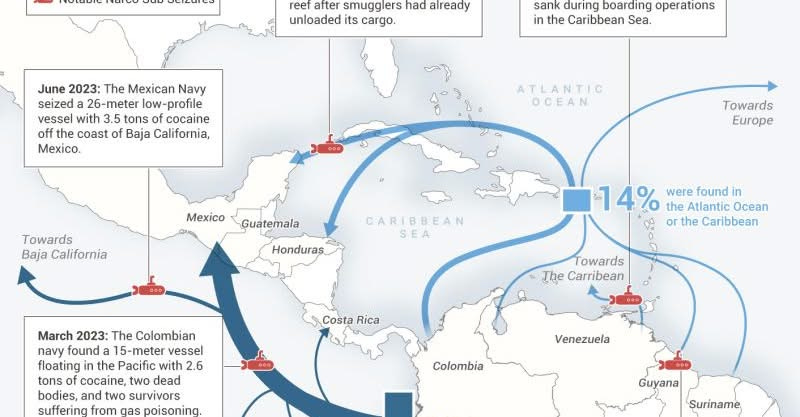An analysis in terms of 4th Generation Warfare (4GW), Maneuver Warfare, and Mission Command: on the use of Narco Submarines surfaced as drug traffickers adapt.
In terms of 4th Generation Warfare, Narco submarines surfaced in new places in 2024, as drug traffickers pushed the vessels into interoceanic voyages to deliver multi-ton drug loads around the world.
4th Generation Warfare (4GW)
4GW emphasizes decentralized, non-traditional warfare involving non-state actors, blending conventional and irregular tactics. The narco-submarine operations depicted align with 4GW principles:
Non-State Actors: Drug cartels operate as sophisticated non-state entities, using semi-submersible vessels to evade detection, mirroring insurgent tactics.
Blurring Lines: The use of narco-subs blurs the line between criminal and military activity, challenging state naval forces (e.g., Mexican and Colombian navies) with adaptive, low-profile technology.
Psychological Impact: High-profile seizures (e.g., 3.5 tons off Baja California, 2.6 tons with fatalities) signal cartel resilience, influencing public and governmental perceptions, a key 4GW tactic.
Global Reach: Routes toward Europe and the Atlantic/Caribbean (14% of seizures) suggest a networked, transnational strategy, typical of 4GW’s diffuse threat model.
Maneuver Warfare
Maneuver Warfare focuses on agility, surprise, and exploiting enemy weaknesses rather than attrition. The narco-sub operations reflect this:
Speed and Surprise: Low-profile vessels enable rapid, stealthy transit across the Pacific and Caribbean, catching naval forces off-guard.
Decentralized Execution: Multiple seizure points (Mexico, Colombia) indicate a distributed network, avoiding concentrated targets and adapting routes dynamically.
Exploiting Weaknesses: Operating in vast ocean areas overwhelms limited naval patrols, using the environment as a strategic advantage.
Disruption: Sinking subs after unloading (e.g., Caribbean Sea) minimizes evidence, disrupting law enforcement’s ability to trace networks.
Mission Command
Mission Command emphasizes decentralized execution, initiative, and trust in subordinates within a shared intent. This applies to the cartels’ operations:
Intent-Driven: The overarching goal (drug trafficking to Europe/U.S.) guides independent sub crews, who adapt to seizures or naval presence without centralized micromanagement.
Empowered Subordinates: Crews demonstrate initiative, as seen in the survival of some despite gas poisoning, suggesting training for autonomous decision-making.
Adaptability: The shift of routes (e.g., toward the Atlantic) reflects a responsive command structure adjusting to interdictions.
Trust in Network: The reliance on semi-subs and smugglers unloading cargo implies a trusted, decentralized logistics chain.
Conclusion
The narco-submarine operations exhibit 4GW’s non-state adaptability, Maneuver Warfare’s strategic agility, and Mission Command’s decentralized execution. Cartels leverage technology and geography to challenge state authority, requiring naval forces to evolve their tactics accordingly.



